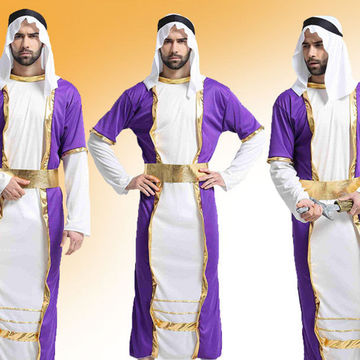Unveiling the Rich Heritage of Eastern Fashion
Discovering the complex tapestry of Eastern fashion introduces a globe where practice fulfills innovation, and workmanship intertwines with cultural symbolism. From the opulent silks of old dynasties to the complex needlework of nomadic tribes, each garment narrates that goes beyond time and boundaries, echoing the abundant heritage and artistic heritage of the East. As we peel back the layers of background and tradition, a remarkable journey awaits, deciphering the tricks behind the exciting attraction and enduring influence of Eastern style on the global stage.
Beginning of Eastern Style

In Mesopotamia, as an example, the Sumerians and Babylonians produced garments using wool, linen, and natural leather, embellished with detailed patterns and fashion jewelry. Ancient Egyptians are renowned for their innovative weaving skills and making use of light-weight, breathable fabrics like linen. Chinese fashion stressed the relevance of shade meaning and elaborate needlework methods, while Indian clothing included dynamic tones, lavish fabrics like silk and cotton, and intricate drapery designs such as the saree.
These ancient human beings not only influenced each various other yet additionally led the way for the culturally rich and varied tapestry that is contemporary Eastern style. Through centuries of evolution, Eastern style proceeds to prosper, mixing custom with modern influences to produce classic and unique designs.
Cultural Impacts and Practices
Attracting from centuries-old customizeds and ideas, social influences and customs play a crucial function fit the essence of Eastern style (eastern wear pakistan). The rich tapestry of societies throughout Eastern regions such as Asia, the Center East, and Africa has actually greatly affected the garments styles, shades, textiles, and designs that prevail in Eastern fashion today
In nations like India, Japan, and China, traditional garments like sarees, cheongsams, and robes proceed to hold considerable social value and are commonly embellished with elaborate embroidery or symbolic patterns that show ingrained beliefs and values. In Middle Eastern countries, the moving abayas and kaftans used by men and females not just serve as moderate clothes but also reflect the area's social heritage and Islamic practices.
Moreover, using particular shades like red permanently luck in Chinese society or elaborate geometric patterns inspired by Islamic architecture even more exemplify exactly how cultural influences materialize in Eastern style - eastern wear pakistan. By honoring and preserving these cultural impacts and customs, Eastern fashion proceeds to advance while staying true to its abundant heritage
Evolution of Eastern Garments
Gradually, Eastern garments have gone through substantial changes, mirroring a blend of tradition and modernity in their layout and style. Traditional Eastern garments such as the saree, robe, hanbok, and salwar kameez have progressed to include modern aspects while maintaining their social essence.
One notable evolution is the usage of cutting-edge materials and methods in Eastern garment building and construction. Standard handwoven textiles like silk and cotton have been enhanced with modern-day materials such as polyester and blends, providing enhanced durability and ease of care. Additionally, advancements in printing technologies have actually enabled intricate patterns and designs to be site here incorporated into Eastern garments with accuracy and information.
Furthermore, changes in shape and tailoring have actually updated Eastern clothing, making them more functional and appropriate for varied occasions. Conventional outfit codes have actually loosened up, permitting for trial and error with colors, embellishments, and styles. This evolution has not just made Eastern garments more appealing and available to an international target market however has also ensured their proceeded importance in contemporary style landscapes.
Meaning in Eastern Clothes
Exploring the ingrained social importance woven right into Eastern attire introduces an abundant tapestry of significance and practice. Eastern garments are often imbued with symbols that reflect the wearer's societal status, spiritual ideas, and cultural identification. As an example, in several Eastern cultures, the color red represents luck and prosperity, making it a popular option for wedding apparel. Elaborate embroidery patterns can share stories of mythology or represent true blessings for the wearer.
In addition, specific garments hold symbolic significances. Its style, fabric, and even the means it is used all lug deep cultural value.

Impact of Eastern Style Today

The incorporation of Eastern aspects in Western style has led to a blend of designs that deal with diverse tastes and choices (eastern wear pakistan). Developers typically attract motivation from Eastern textiles, silhouettes, and patterns, creating innovative and special pieces that mix conventional and modern-day looks. This cross-cultural exchange has not only revitalized the apparel industry yet also fostered a deeper gratitude for Eastern heritage and craftsmanship
In addition, the rise of digital systems and social media has actually better magnified the influence of Eastern fashion, allowing brands and designers to why not check here get to a bigger audience and article display their cultural heritage to the globe. Through partnerships, style programs, and on-line projects, Eastern fashion proceeds to grow and progress in today's vibrant and interconnected worldwide landscape.
Conclusion
In conclusion, the abundant heritage of Eastern style is a testimony to the social impacts, elaborate craftsmanship, and extensive symbolism embedded in each garment. From old worlds to modern-day analyses, Eastern style remains to captivate with its unique blend of tradition and innovation. The effect of Eastern style today functions as a reminder of the classic sophistication and imaginative expression that have actually made it a global phenomenon celebrated for its rich social heritage.
Checking out the complex tapestry of Eastern fashion unveils a globe where tradition meets innovation, and workmanship links with social significance.The withstanding importance and social importance embedded in Eastern outfit proceed to form and influence the contemporary effect of Eastern style today. Eastern style has actually gone beyond boundaries, becoming a worldwide sensation welcomed by designers, celebrities, and fashion fanatics worldwide.In verdict, the rich heritage of Eastern style is a testament to the social impacts, intricate workmanship, and extensive meaning embedded in each garment. The impact of Eastern fashion today offers as a suggestion of the timeless sophistication and artistic expression that have actually made it a worldwide phenomenon commemorated for its abundant cultural heritage.